Shoulder Stretches: The Anatomy Of The Shoulder
The muscles described in the chest stretches section also play a major role in shoulder stretches, so feel free to look at those stretches as well.
Furthermore, some of the muscles that are part of the shoulder overlap with the back and neck.
Shoulder muscles can be placed into three groups:
Superficial posterior axioappendicular (extrinsic)
- Trapezius
- Latissimus dorsi
Deep posterior axioappendicular (extrinsic)
- Levator scapulae
- Rhomboids
-
- Major
- Minor
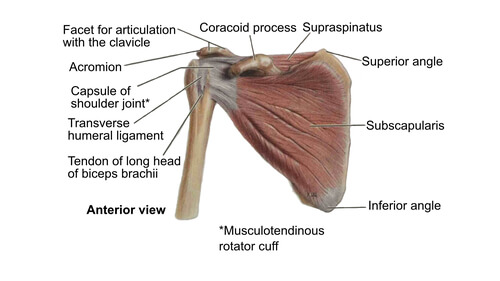
Scapulohumeral (intrinsic)
- Deltoid
-
- Anterior
- Middle
- Posterior
- Teres major
- Four rotator cuff muscles
-
- Supraspinatus
- Infraspinatus
- Teres minor
- Subscapularis
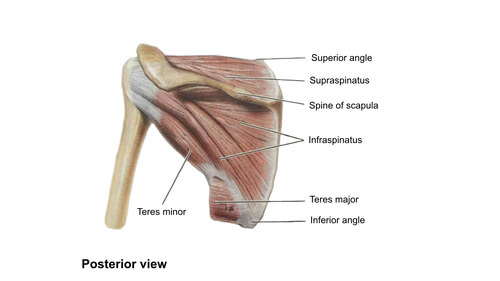
Rotator Cuff Muscles
The four muscles involved in the rotator cuff muscles are called this because they form a musculocutaneous cuff around the glenohumeral (GH) joint. These reinforce the fibrous layer of the joint capsule of the GH joint, as well as help with movements. They help provide stability to a joint that produces a large amount of movement.
Almost all of the rotator cuff muscles help with the rotation of the arm, except for the supraspinatus. The supraspinatus muscle helps the deltoid with the first 15° of abduction of the arm.
Benefits To Shoulder Stretches
The shoulder joint has the ability to move in a large range of motion and relies on the rotator cuff muscles to keep it stable. It is important to be gentle with your joint when performing these shoulder stretches.
The benefits of stretching is to:
- Improve function
- Improve/maintain good posture
Shoulder Stretching Exercises
Horizontal Shoulder Adduction
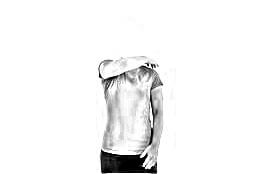
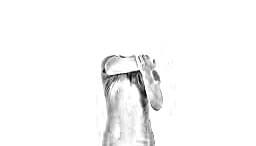
- Stand and place your upper arm across your chest and your hand over the opposite shoulder.
- Squeeze your shoulder blades together and use your other hand to push your arm in towards you, until you feel a stretch in the back of your shoulder.
- Hold the stretch for 20-30 seconds.
Sleeper Stretch
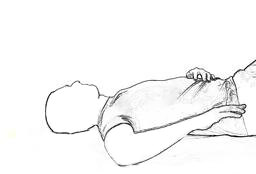
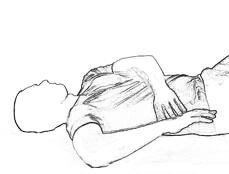
- Lie on your back with your elbow raised at shoulder height.
- Pull your shoulder back and slowly lower your hand towards your feet as far down as you can without lifting your shoulder off of the ground.
- Apply gentle pressure to your forearm until a gentle stretch is felt in your shoulder.
- Maintain the position and relax.
- Hold the stretch for 20-30 seconds.
- You may use a light weight to stretch instead.
Passive Internal Rotation Stretch
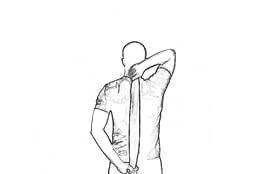
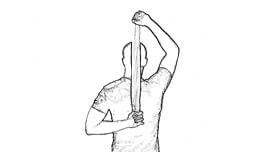
- Be careful not to push this stretch too much. Be gentle!
- Stand with the affected arm behind your back and each hand grabbing either end of the towel/rope.
- By pulling the towel over your shoulder with the unaffected arm, lift your arm behind your back as high as you can.
- Hold the stretch for 10-30 seconds.
- Slowly return to the initial position and repeat.
- The affected arm should not be doing any of the movement.
Standing Lat Stretch
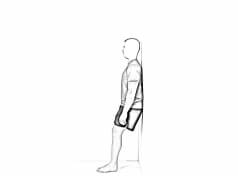
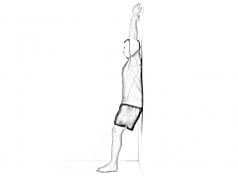
- Stand with your back flat against a wall (tuck your butt/tailbone underneath you to flatten lower back gap)
- Your feet slightly away from the wall and your arms straight at shoulder level with palms facing upward.
- Raise your arms overhead, keeping your palms facing upward and your elbows close to your head until you feel a gentle stretch.
- Maintain the position and slowly lower your arms.
- Hold the stretch for 20-30 seconds.
- Your head, shoulders, and back must stay in contact with the wall at all times.
Supine Flexion
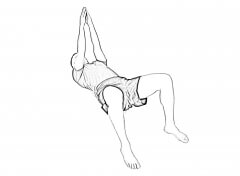
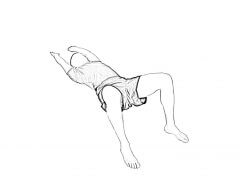
- Lie lengthwise on a long towel roll placed along the mid-back at the most marked curvature or on a foam roller.
- Keep your knees bent for balance.
- Keep the lower core engaged, and the head in a neutral nod.
- Reach both arms up forward to 90 degrees. Slowly lift the arms overhead, being sure not to lift the low back up off the ground.
- Hold the stretch for 20-30 seconds.
- Return your arms to upright and repeat.
- Instead of a long hold, you can also do slow, controlled movements with a short pause at the top. Repeat 10 times.
Supine Abduction (snow angel)
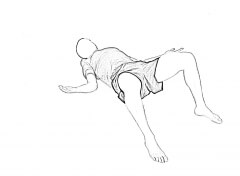
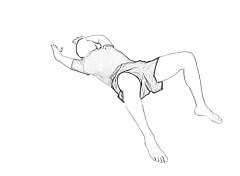
- Lie on your back on either the floor or a foam roller, knees bent and head supported, arms by your side, palms up.
- Engage your lower core muscles to keep the lower back in neutral.
- Keeping the arms back in line with your body, slowly and under control, reach up sideways to overhead, like making a snow angel.
- Return your arms to upright and repeat.
Thread The Needle
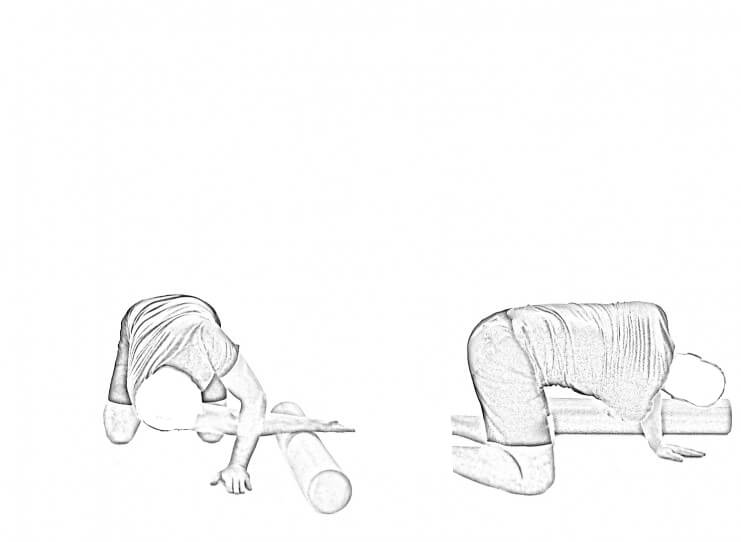
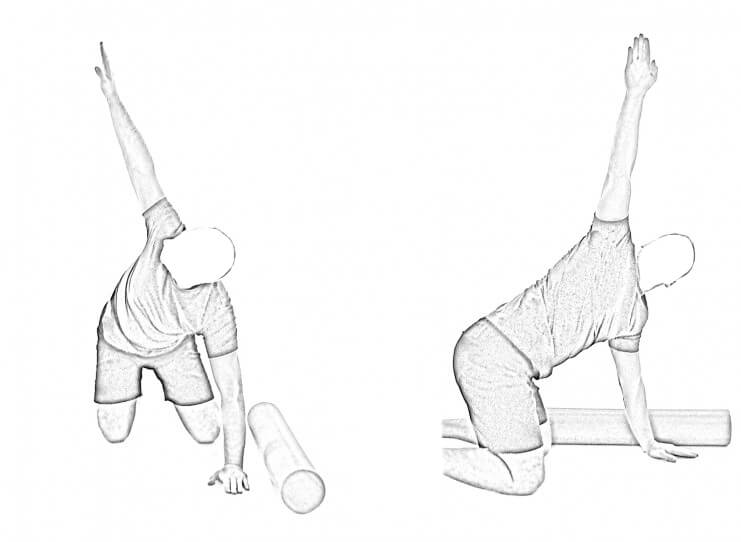
- Start in a four point position with hands directly under the shoulders and the knees under the hips.
- Keep your chin tucked, back straight, and shoulders back.
- With one arm, reach underneath the other onto the roller, palm up, and roll the arm and shoulder through.
- Return to the center and raise the arm up and back to open your chest.
- Repeat with your other arm.
Chapter Selection
Don’t miss out!
Subscribe to our newsletter to get your free copy of our stretching guide and get notifications when we make a new post to help you reach your fitness goals.
- Howley, E. T., & Franks, B. D. (2007). Fitness Professional’s Handbook (5th ed.). Champaign, IL: Human Kinetics.
- Moore, K. L., & Dalley, A. F. (2006). Clinically Oriented Anatomy (5th ed.). Baltimore, MD: Lippincott Williams & Wilkins.
- Nieman, D. C. (2011). Exercise Testing and Prescription: A Health-Related Approach (7th ed.). New York, NY: McGraw-Hill.
- Sá, M. A., Neto, G. R., Costa, P. B., Gomes, T. M., Bentes, C. M., Brown, A. F., et al. (2015, Mar 29). Acute Effects of Different Stretching Techniques on the Number of Repetitions in A Single Lower Body Resistance Training Session. Journal of Human Kinetics , 177–185.
- Sherwood, L., & Kell, R. (2010). Human Physiology: From Cells to Systems, First Canadian Edition. Toronto, ON: Nelson Education.